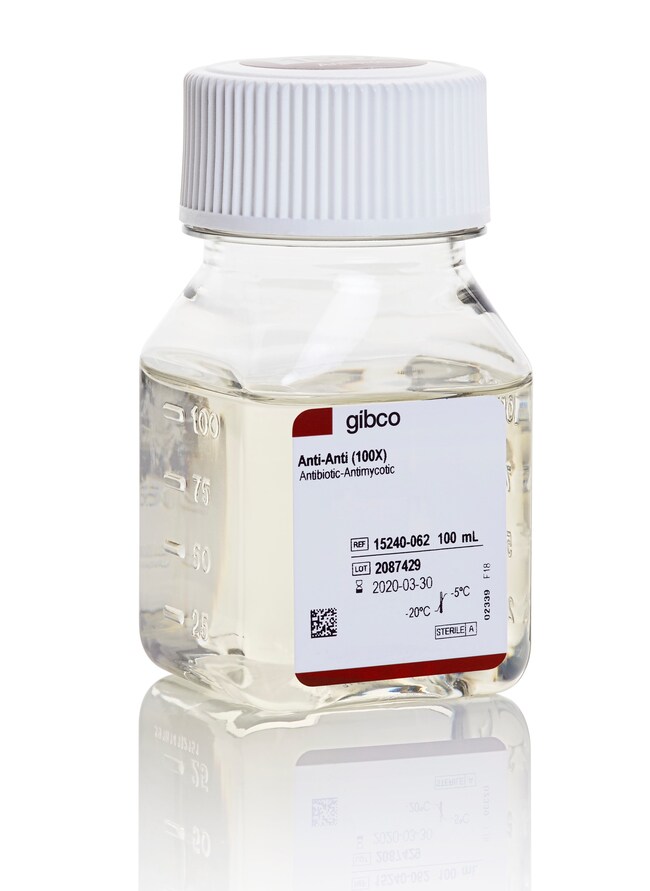Search Thermo Fisher Scientific

Antibiotic-Antimycotic (100X)
| Catalog Number | Quantity |
|---|---|
| 15240062 | 100 mL |
| 15240096 | 20 mL |
| 15240112 | 20 x 100 mL |
Gibco™ Antibiotic-Antimycotic is used to prevent bacterial and fungal contamination. This solution contains 10,000 units/mL of penicillin, 10,000 μg/mL of streptomycin, and 25 μg/mL of Gibco Amphotericin B. The antibiotics penicillin and streptomycin prevent bacterial contamination of cell cultures due to their effective combined action against gram-positive and gram-negative bacteria. Amphotericin B prevents fungal contamination of cell cultures due to its inhibition of multi-cellular fungus and yeast.
Penicillin was originally purified from the fungus Penicillium and acts by interfering directly with the turnover of the bacteria cell wall and indirectly by triggering the release of enzymes that further alter the cell wall. Streptomycin was originally purified from Streptomyces griseus. It acts by binding to the 30S subunit of the bacterial ribosome leading to inhibition of protein synthesis and death in susceptible bacteria. Amphotericin B is an antifungal agent that prevents the growth of fungi and yeast by causing an increase in fungal plasma membrane permeability.
Shipping conditions: Dry ice
Shelf life: 12 months from date of manufacture
Documents & Downloads
Certificates
Safety Data Sheets
Scientific Resources
Frequently asked questions (FAQs)
The use of antibiotics is not recommended during episomal reprogramming, especially Fungizone antimycotic. If antibiotics must be used during the reprogramming process, pen/strep could be used. For established iPSCs (after reprogramming is complete), either antibiotic/antimycotic or pen/strep should be fine.
Find additional tips, troubleshooting help, and resources within our Cell Culture Support Center.
Yes, however, we do not recommend adding antibiotics to the medium at the time of thawing. Thaw cells into medium without antibiotic and allow the cells to recover from the thawing process. After that, you can add antibiotics by diluting into the medium.
Find additional tips, troubleshooting help, and resources within our Cell Culture Support Center.
The components are in a 0.85% saline solution.
Find additional tips, troubleshooting help, and resources within our Cell Culture Support Center.
This solution contains 10,000 units/mL of penicillin, 10,000 µg/mL of streptomycin, and 25 µg/mL of Gibco Amphotericin B.
Find additional tips, troubleshooting help, and resources within our Cell Culture Support Center.
The recommended condition is storage at -5 to -20 degrees C and when stored as recommended, the shelf life is 12 months from the date of shipment.
Find additional tips, troubleshooting help, and resources within our Cell Culture Support Center.